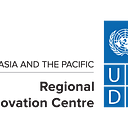Inclusive Innovation: what it is, and what the COVID-19 response might tell us about future innovation policies
By: Alex Glennie (Nesta), Dr. Robyn Klingler-Vidra (King’s College London) and Courtney Savie Lawrence (UNDP)
While the conversation on COVID rapidly evolves on a daily basis, one constant is that governments and communities are engaged in one of the greatest behavior science experiments ever, trying to ‘flatten the curve’ of the pandemic. What are the effects of these restrictions on our social, economic, health, tech and environmental ecosystems? How are we ensuring that no one is left behind, especially those in the most fragile and vulnerable communities? How is the remarkable array of technological and data innovations developed in response to the pandemic going to be deployed in post-crisis times: will it lead to more effective safety nets or limit citizen freedom? What type of inclusive urban design innovations will we need to avoid crisises in megacities like Manila? And what does the flurry of citizen driven, peer-to-peer innovations springing up all over Asia tell us for the future of innovation policy?
The COVID-19 highlights that we need to become ever more laser focused on a proactive and intentional approach to ‘inclusivity — not as a ‘nice to have’ but an essential framework to act upon. In related threads, we can see how the Corona Virus heightens inequality (as Amartya Sen would call personal heterogeneities, contingencies that influence capabilities), and how it adds insult to injury for workers and the unemployed living in an already fragile and vulnerable economic day-to-day reality.
Background — emerging patterns of inclusive innovation in South Asia
In our report, we define the notion of ‘inclusive innovation’ as one that refers to “the pursuit of innovation that has social aims and local context at its heart. One can think of it as either or both — a more inclusive approach to innovation, or a more innovative approach to driving social inclusion.” The backstory, including an open provocation to us all is on a recent post here.
When we initiated this study in summer 2019, investigating alternatives to Silicon Valley, in terms of the understanding and application of innovation from a policy lens, we certainly never could have anticipated that when we would go to press, an unprecedented global crisis would be unfolding in real time. This reality has required us to pause, reflect, and reset the context for what we are in fact examining.
In short, we are still driven by this essential inquiry as scribed in the report foreward: Innovation is not neutral: it has both a rate and, crucially, a direction. The style of innovation frequently touted as the answer is often not inclusive at all — it can exacerbate social and economic inequality and have unintended environmental consequences. But the downside to inequality has become a more urgent matter, one of life and death.
Join the conversation with us live — this Thursday, March 26th!
At this digital launch of our new report we will ask: how can we build on the momentum generated by the COVID response and shape a “new normal” where inclusiveness is at the heart of innovation policy? What conditions and capabilities enable inclusive innovation? What role can governments and civil society play?
In this upcoming session, our Regional Innovation Team Lead Giulio Quaggiotto, along with Alex Glennie of Nesta and Robyn Klingler-Vidra of King’s College London, will lead an interactive discussion to share the report’s findings and explore how to take the work forward. If you are interested in ways in which grassroots innovators, companies and government can come together to pave an inclusive future in innovation, and keen to share ideas about how that can be further done in South-East Asia (and beyond), please join and register here first.
Looking to download the report PDF? You can find it on any of the following sites, along with other publications: Global UNDP, Asia and the Pacific UNDP, Vietnam UNDP, Philippines UNDP, Myanmar UNDP, Indonesia UNDP
Contribute to the agenda or let us know about others working with #InclusiveInnovation in similar ways outlined in the report? You can continue the conversation with UNDP Regional Innovation Center’s Head of Exploration, Courtney Savie Lawrence by sending a Direct Message via the RIC Team Twitter here or through LinkedIn here. We are seeking more examples from the ecosystem.
